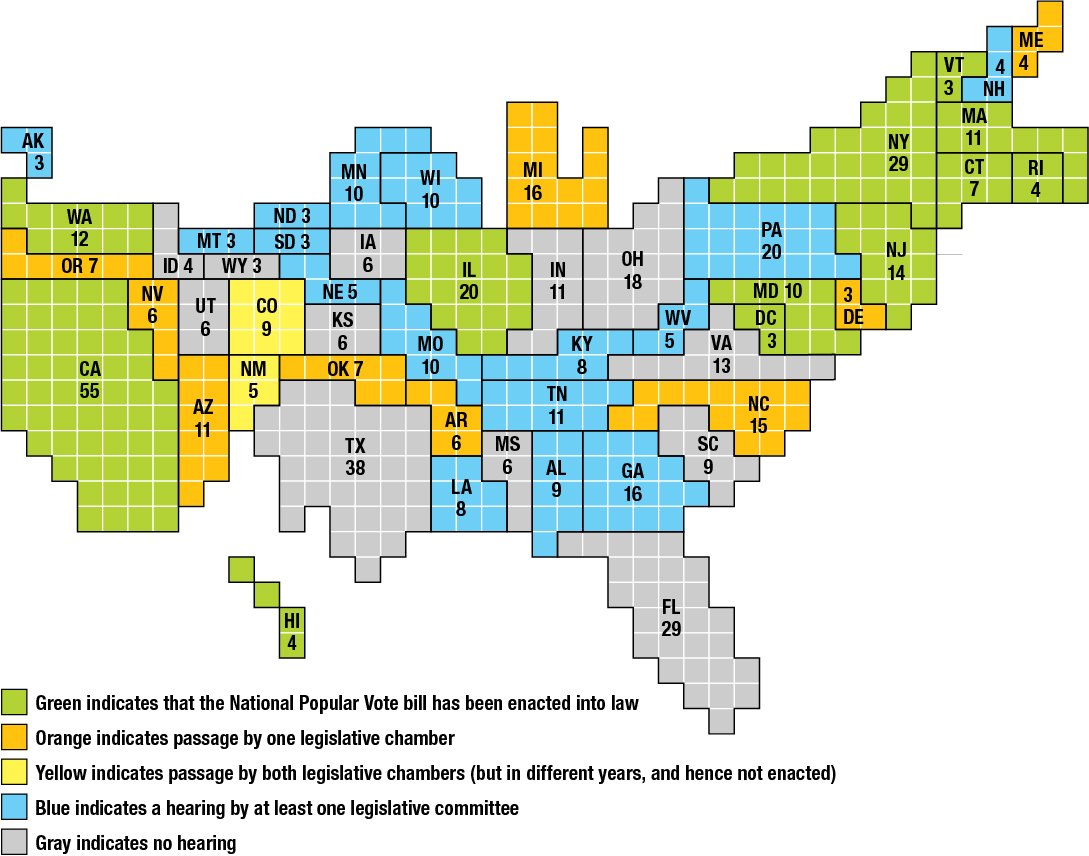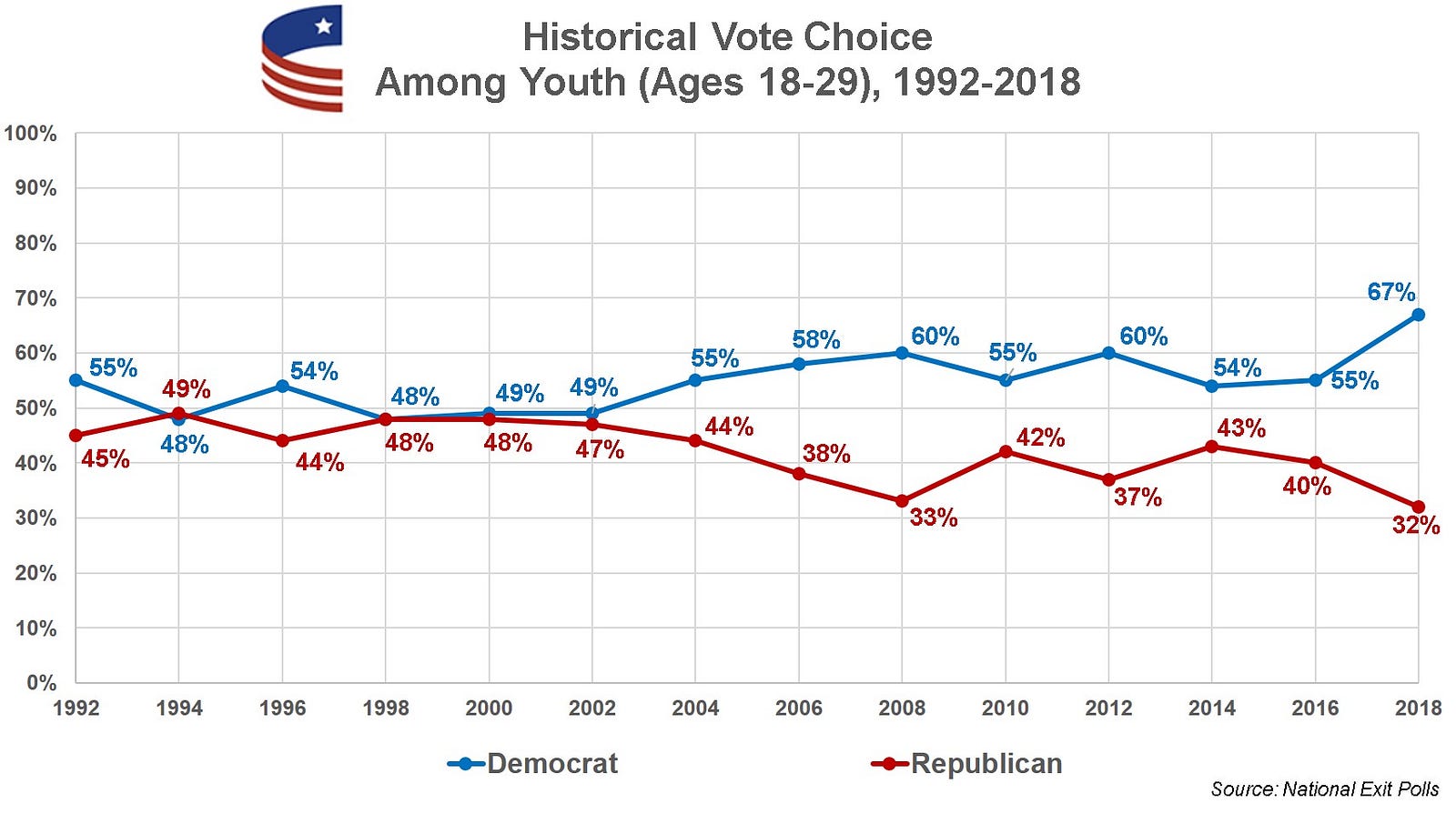One of the most annoying distortions we get from lazy media coverage and political lightweights is the meme that Democrats want a sudden, all-at-once conversion to Medicare for all. No serious Democratic political leader is advocating immediate destruction of the entire private health insurance industry. Medicare for all is a goal to be achieved by measured reforms in a reasonable time frame that won’t cause a sudden disruption of America’s health care system and its millions of employees. To understand what Democrats are actually advocating for health reform, read “We read Democrats’ 8 plans for universal health care. Here’s how they work” by Sarah Kliff and Dylan Scott. For a common sense take on progressive health care reform, check out Dylan Scott’s interview of Jacob Hacker at Vox.
From the KFF Health Tracking Poll – January 2019: The Public On Next Steps For The ACA And Proposals To Expand Coverage by Ashley Kirzinger: “A majority of the public say it is either “extremely important” or “very important” that Congress work on lowering prescription drug costs for as many Americans as possible (82 percent), making sure the ACA’s protections for people with pre-existing health conditions continue (73 percent), and protecting people with health insurance from surprise high out-of-network medical bills (70 percent). Fewer – about four in ten – say repealing and replacing the ACA (43 percent) and implementing a national Medicare-for-all plan (40 percent) are an “extremely important” or “very important” priority. When forced to choose the top Congressional health care priorities, the public chooses continuing the ACA’s pre-existing condition protections (21 percent) and lowering prescription drug cost (20 percent) as the most important priorities for Congress to work on. Smaller shares choose implementing a national Medicare-for-all plan (11 percent), repealing and replacing the ACA (11 percent), or protecting people from surprise medical bills (9 percent) as a top priority. One-fourth said none of these health care issues was their top priority for Congress to work on.”
Ezra Klein explains the pivotal importance of the filibuster question to health care reform at Vox: “While it’s possible to imagine a Medicare-for-more bill making it through budget reconciliation, if Democrats want to do something as complex as reconstructing the American health care system, they’re going to need to be able to write legislation in a simple, straightforward way…That means that Democrats either need to get rid of the filibuster, which they can do with 51 votes, or they need to repeatedly overrule parliamentary challenges to their reconciliation bill, which is pretty much the same thing.
My favorite headline of the day comes from ThinkProgress, where Addy Baird explains “Here’s what single-payer advocates want to hear from 2020 Democratic primary contenders: No co-pays, no deductibles, no need for supplemental policies, no private insurance.” My one modification would be that those who want additional private insurance should be able to purchase it. Baird notes further, “a study from the conservative think tank Mercatus found last July that Medicare for All would save the United State trillions, and 70 percent of all Americans — including 85 percent of Democrats and 52 percent of Republicans — support Medicare for all, according to a Reuters poll from last August. Just 20 percent of Americans said they oppose the idea outright.”
“Schultz has revealed his hand with his attacks on Medicare for All proposals,” John Nichols explains in his article, “Howard Schultz Is Just Like Every Other Billionaire—Afraid of Losing His Wealth and Privilege: He calls Medicare for All “far too extreme,” but he is the real extremist.” at The Nation. “The idea that “we should get rid of …the insurance industry”—and replace it with a humane, efficient and affordable guarantee of health care as a right for all Americans—is, to his exceptionally privileged view, “far too extreme.” And don’t even get him started on Alexandria Ocasio-Cortez’s proposal to make the very rich pay their fair share by imposing a 70 percent marginal tax rate on billionaires…Now, billionaire Howard Schultz is labeling Democrats who would guarantee health care for all, education for all and jobs for all as “far too extreme.” In fact, Schultz is the extremist—one of the “prophets of calamity” who FDR warned will “seek special financial privilege” by denying “the necessity of reform and reconstruction.”
Eric Boehlert has some noteworthy comments on media coverage of Schultz’s launch at Daily Kos: “Schultz is clearly benefiting from our Davos-style political culture, where billionaires are automatically held up as symbols of what is right and just. And if a billionaire raises his hand and says he wants become president without facing any primary-season opponents, the media parts like the Red Sea and prepares a seat for him in front of an eager television host…Schultz is also singing out of the same “both sides” hymnbook that the Washington press loves so much. He constantly stresses the idea that both Trump and Democrats have become dangerously out of step with mainstream America—that Democrats are just as radical as Trump, and that the two parties always represent mirror opposites of each other on the political spectrum…Schultz is simply advancing a fraudulent narrative, and the press is mostly letting him get away with it. Over and over…”
Does Howard Schultz support cutting Social Security and Medicare benefits? At New York Magazine’s Intelligencer, Jonathan Chait cites Schultz’s “desire to cut social insurance programs. “We can get the 4 percent growth,” he said last year, “we can go after entitlements, and we can do the right thing — if we have the right people in place.”…In reality, there is no constituency for cutting these programs in either party. A 2017 Pew survey found 15 percent of Republicans, and 5 percent of Democrats support cuts to Medicare, while 10 percent of Republicans and 3 percent of Democrats support cuts to Social Security.”
Is Schultz the ‘austerity candidate’? In his article, “The phony centrism of Howard Schultz,” Damon Linker writes at The Week: “He’s a Democrat who wants Democrats to be less ambitious, to trim their sails, to stop making policy promises premised on raising taxes on people like him…That doesn’t make him a centrist. It makes him a rich Democrat who opposes his fellow Democrats taking a bigger chunk of his income or wealth…Of course he doesn’t put it that way. Instead, he talks about prudence. About the danger of budget deficits. About the importance of Americans living within their means. The country simply can’t afford universal health insurance or free college tuition — even though, somehow, such comparably wealthy countries as Canada, Denmark, France, and Germany manage to have something approaching one or both.
Is Schultz’s economic elitism basically ‘Republican Lite’? At The Guardian, Luke Savage observes, “He expresses concern that so many have so little money in the bank but doesn’t think low-earning workers deserve a raise, a union, free health insurance, or the opportunity to get an education without drowning in debt courtesy of sky-high tuition…Schultz is pledging to be a tribune for the billionaire class to which he himself belongs, over and against the growing current of popular, social democratic policies continuing to gather momentum within the Democratic party and among the wider US electorate.” Savage cites Schultz’s “vague, self-interested brand of class harmony as an alternative to meaningful reform…Instead, the grip of billionaires on the American political system – be they conscientious or not – must be broken once and for all.”






